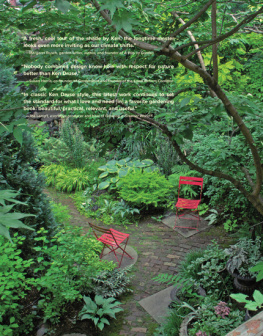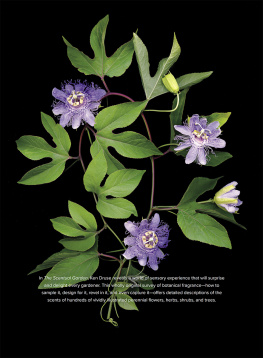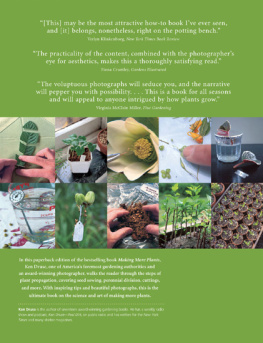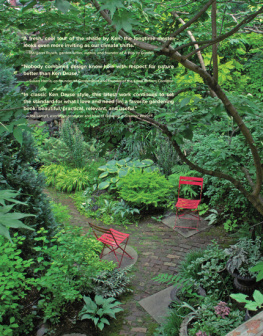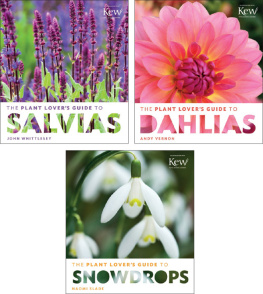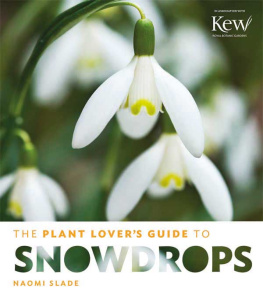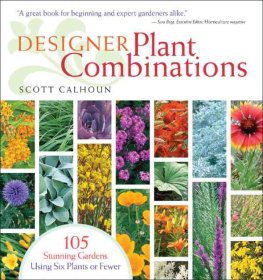In Natural Companions, acclaimed garden writer Ken Druse presents recipes for perfect plant pairings using diverse species that look great together and bloom at the same time. Organized by theme within seasons, topics include color, fragrance, foliage, grasses, edible flowers, and much more, all presented in photographs of gardens that show planted combinations from a wide variety of climates and conditions. Natural Companions also features more than one hundred special botanical images of amazing depth and color created in collaboration with artist Ellen Hoverkamp using modern digital technology.
Filled with an incredible amount of horticultural guidance, useful plant recommendations, and gardening loreall written in Druses charming, witty stylethis book is a must-have for gardeners and lovers of plants and flowers.




Published in 2012 by Stewart, Tabori & Chang
An imprint of ABRAMS
Text copyright 2012 Ken Druse
Botanical photographs and copyright 2012 Ellen Hoverkamp
Garden photographs copyright 2012 Ken Druse
Photograph copyright 2012 Jerry Harpur
All rights reserved. No portion of this book may be reproduced, stored in a retrieval system, or transmitted in any form or by any means, mechanical, electronic, photocopying, recording, or otherwise, without written permission from the publisher.
Library of Congress Cataloging-in-Publication Data:
Druse, Kenneth.
Natural companions: the garden lovers guide to plant combinations / Ken Druse with Ellen Hoverkamp.
p. cm.
ISBN 978-1-58479-901-6
1. Companion planting. 2. Plants, Ornamental. 3. GardensDesign. I. Hoverkamp, Ellen. II. Title. SB453.6.D78 2012
635dc23
2011036180
Editor: Dervla Kelly
Designer: Anna Christian
Production Manager: Jacquie Poirier
Stewart, Tabori & Chang books are available at special discounts when purchased in quantity for premiums and promotions as well as fundraising or educational use. Special editions can also be created to specification. For details, contact specialsales@abramsbooks.com or the address below.

115 West 18th Street
New York, NY 10011
www.abramsbooks.com
Dedication
Louis Bauer
Timothy King Jr.


Blossoms of night-blooming cereus (Epiphyllum oxypetalum) open for one night in late summer. The large, fragrant flowers co-evolved with bat pollinators in their native habitat.

I met Ellen Hoverkamp several years ago, when she was exhibiting her work at a gardening symposium. Ellen creates unparalleled images of plantsphotographs on the oversize, twelve-by-seventeen-inch surface of a flatbed scanner. Her art is unrivaled, and yet harkens to traditions of botanical illustration and flower photographykind of Imogen Cunningham meets Mrs. Delany, the botanical collage artist from the 1780s.
I was immediately struck by the depth, beauty, and personality of Ellens arrangements. As a gardener, I realized that the images represented plants captured at moments in time. It occurred to me that Ellens work could demonstrate potential flower and foliage schemes and thus serve as a novel and inspiring guide to share with other gardeners and designers. And thats what we have produced here with more than 200 images.
Ellen has been immortalizing the plants grown by her neighbors and gardener friends since 1997. She travels in a minivan with a large cooler in the back filled with glass jars, water, and a bag of ice to transport specimens safely from their gardens to her studio.
Im in awe of what gardeners do, says Ellen. And they let me have cuttings, which is like giving me their treasures. Ive found a way to make a souvenir, a lasting memory of how my friends nurture nature. I want to show other people what gardeners know about the beauty of plants.
For our collaboration, I knew we had to offer more than pretty plants. I made lists of themes and subjects such as plant families, palettes, and other reasons to bring plants together. I grew many of the plants for our project in my garden, and Ellen went to her gardening friends, lists in hand, for more. We called in plants from friends in the Southeast and Southwest, on the West Coast, and at other locales around the country to be sure to touch on as many regions as possible. Then Ellen had to scan them.
Back in her darkened studio, she arranged flowers and plants facedown on the glass surface of the scanner. So they were not crushed, Ellen suspended some of the stems from wires. Following several trial passes, she created the final versions of the works you see in the book.
During the hot summer, Ellen set up a work space in the basement of my house in the northwest corner of New Jersey. I picked; she scanned. In many of the arrangements, we tried to present a hierarchy as it might appear in a planting: from the low ground cover in the foreground, medium-size samples in the middle, and finally the tallest constituents at the top. The results in this book are slices of planting schemes, as if you could isolate a pie wedge from a bed or border to create an exhibition with samples plucked from the garden.
Flower form and leaf texture in Acer japonicum Aconitifolium, Deutzia Magicien, crab apple (probably Malus Prairie Fire), and Syneilesis aconitifolia.

Symphytum x uplandicum Variegatum, Helianthus Lemon Queen, Caryopteris x clandonensis, and Hydrangea paniculata Limelight inspire a future scheme.

From Grant Meyers Southwest garden in winter: AEuphorbia rigida; BAloe Blue Elf; CLachenalia aloides; DOpuntia engelmanii; EBryophyllum daigremontianum; FCassia didymabotrya; G
Next page

